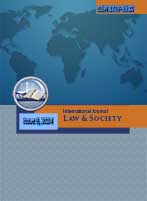Prisoner Exchange in the Context of the Muscovite-Ukrainian War (2014–2024).
Keywords:
war, warriors, prisoners of war, command, enemies, territory, dismissal, exchange.Abstract
After the victory of the Revolution of Dignity in 2013–2014 and the change of power in Ukraine, Muscovy’s influence on the Ukrainian state decreased dramatically. This contradicted the geopolitical strategy of the Muscovite federation, which, in order to achieve the status of a «great power», had to keep Ukraine in its sphere of interests. Therefore, the Kremlin radicalized its actions aimed at destabilizing the Ukrainian state. Without formally announcing the outbreak of hostilities and even publicly denying its participation in them and ties to pro-Moscow militants, Muscovy has intensified the so-called hybrid war against Ukraine, also known as the «war of controlled chaos».
The hybrid war that the Muscovite Federation has launched against Ukraine is a symbiosis of such different types and methods of its implementation as direct and covert military operations using reconnaissance and sabotage and battalion tactical groups of the Armed Forces of the Muscovite Federation, artillery shelling of Ukrainian military facilities from the territory of Muscovy, etc. The direct consequence of the hybrid war was the occupation of the Crimean peninsula by the Muscovites in 2014 and the proclamation of the so-called Donetsk and Luhansk «people’s republics».
On February 21, 2022, the Muscovite authorities recognized the DPR and LPR terrorist groups created in 2014 as state entities. Two days later, on February 24, at 4:35 a.m., by launching a missile strike on the territory of Ukraine, Muscovy began a new stage of the eight-year war against our country – a full-scale armed invasion.
One of the consequences of the full-scale Muscovite-Ukrainian war was an increase in the number of prisoners of war on both sides. Accordingly, the number of exchanges of prisoners and the bodies and remains of fallen soldiers increased. This is what the article is about.


